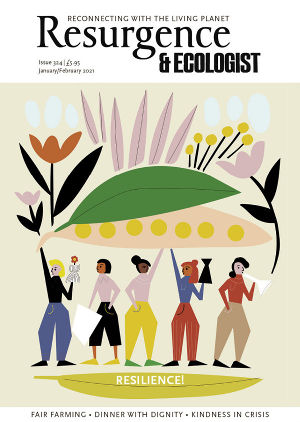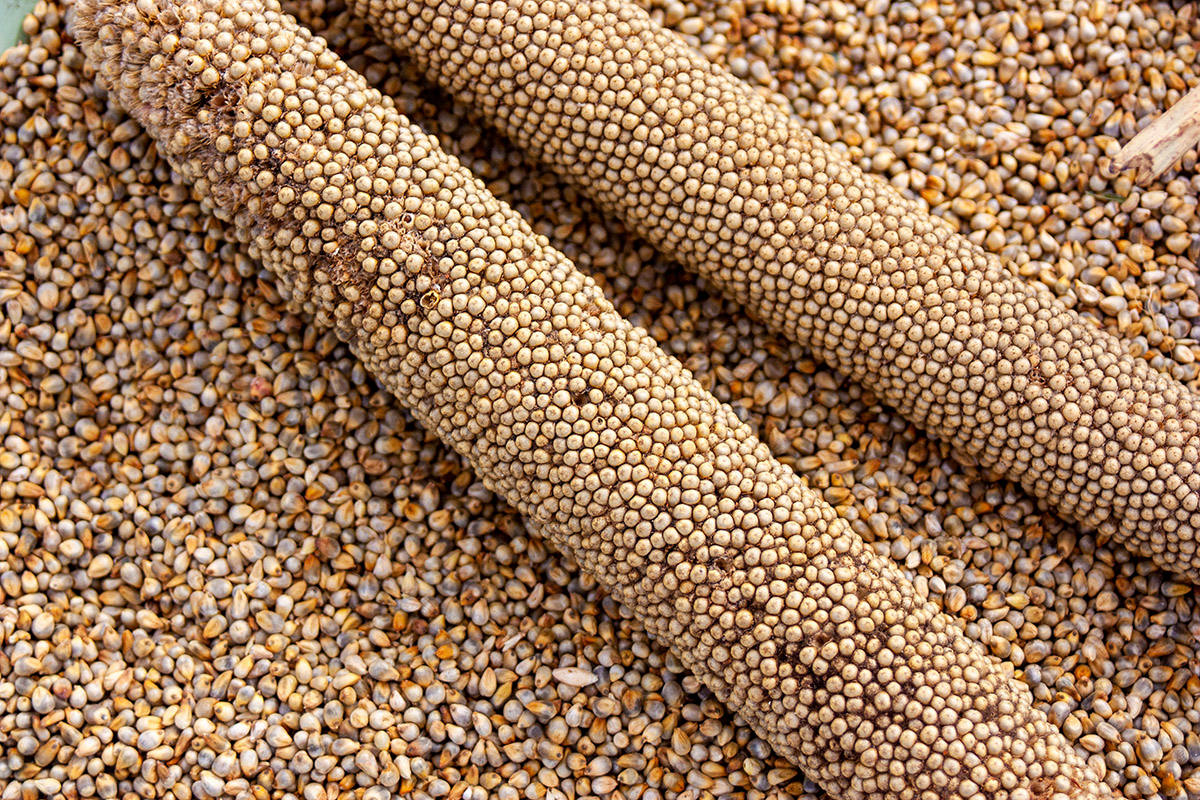You have probably never heard of Bikita, a district in south-eastern Zimbabwe, but for me this is home – where my ancestors lived, where my roots are – and we have an important story to tell.
Like many others across Africa and the world, Bikitans have been feeling the impacts of the Covid-19 pandemic, on top of the violence of climate change. These crises have given us pause for thought, encouraging us to reflect on our recent history – what we have lost and gained, why we are experiencing drought and flood like we are. By coming together to think, we have been able to take collective action.
It is this story I wish to tell. The story of how the communities of Bikita are realising what resilience and food sovereignty mean to us, remembering how our ancestors lived and reaching back into the past to bring what was good into our future.
CRISIS TO CRISIS
Just before the Covid-19 lockdown, large numbers of people decided to flock to rural areas like Bikita where their relatives live, because there’s more space and freedom. This has created pressure, especially on food.
Unfortunately, this movement to rural areas has also brought increased criminality. These are places where generally one can walk around safely at night. People leave harvested food in the open, and many food storage areas are in public places. But during lockdown local shops have been broken into, and food has been stolen from people’s houses. This is particularly worrying because it is just one problem amongst many that Bikitans are currently experiencing.
In March 2019, Bikita and many other parts of Zimbabwe were very badly affected by Cyclone Idai. Houses collapsed, people lost their lives, animals were killed. Rivers overflowed their banks, resulting in the loss of crops in nearby fields.
The cyclone is part of a growing pattern of extreme weather events we are experiencing, and this is greatly impacting farmers. We now have far more frequent periods of drought and flood, posing major challenges to food production. This year, because the rains were very erratic, virtually no one has harvested maize. It just hasn’t matured.
INDIVIDUAL TO COLLECTIVE
Fortunately for Bikitans, the impact of increased pressure on our food system has been reduced by the collective actions we have been taking to build our resilience.
For the last five years or so, with support from South African-based NGO Earthlore, we have been bringing the community together to hold dialogues about both the problems we face and how we can solve them. Our elders are at the heart of this process, and through them we are learning how they built resilience into their lives over generations and navigated other crises.
After Idai, more than 200 Bikitan farmers met to share their experiences of the cyclone. Some crops had been lost, but others had thrived. For example, the farmers said that their sorghum crop, which had nearly dried up from the drought prior to the cyclone, literally rose from the dead because of Idai.
Together we came to a conclusion: the more diversity we have in our fields, the more resilient we will be. This season, farmers who found that their maize harvest was poor were saying to me: “But I still got something from my millet crop,” or, “Nonetheless, I got something from my groundnuts.”
In this part of the world, farmers are encouraged by the government to grow cash crops and to use pesticides and herbicides, which these crops depend on. Our trajectory in recent years has been the opposite – to revive the diversity of local, traditional crop varieties suited to our lands and climate from the seed we save ourselves.
We have seen amazing and unexpected results from this work. No crop exemplifies our success better than millet.
MAIZE TO MILLET
Millet is at the very core of life in Bikita. But in recent decades this sacred seed has been disappearing from our communities.
Back in 2015, at our first community dialogues, we had long conversations about why this was happening. A number of reasons came up. First, millet is labour-intensive. With the arrival of imported maize, which is much less labour-intensive, many abandoned millet. Second, dietary preferences have shifted, as people got used to what we call ‘white pap’ made from maize.
But after some years of pressure and incentives from government and commercial seed companies to grow maize, giving more and more land over to it for cash, farmers in Bikita are realising that this is not really benefiting them. Growing our native millet, however, brings many gifts.
Millet is very drought-tolerant, so even in very bad seasons you’ll find that farmers will always have a crop. Millet will thrive in poor soils, and without many inputs it will still give you something. This is a major concern now in Bikita, where soils are tired after being tilled for years and years and having chemicals applied to make growing non-native crops possible.
Millet has played such a central role in our communities over such a long time that we have found that reviving it has helped us restore other important things.
RECONNECTING WITH THE WHOLE
We have been making concerted efforts to bring back as much of our millet diversity as possible, finding the varieties of finger millet, pearl millet and others that local people, usually the older women, were still keeping, and getting them back into the fields.
The revival of millet has led us to ask other questions: how did we harvest the millet? How did we save these seeds? What is the best way to plant them? What ceremonies were they used for? What is their nutritional value?
For example, when the millet is harvested we traditionally hold a threshing and winnowing ceremony, for which men go to the mountains to harvest the threshing sticks, which must come from particular types of tree. The winnowing is done using winnowing baskets that are also made from a particular type of wood. There is a deep relationship between the crops, the seeds, the food and the wild.
Similarly, there are some fruits that are found in the wild in what we call “the hunger season”, when we are waiting for the harvest. This is the hardest time for the farmer and it is the time that the wild fruits and wild vegetables that grow in the mountains, wetlands and forests come to our aid.
We began to question ourselves – where will we get threshing sticks, winnowing baskets and wild fruits and vegetables if we don’t protect the places where they grow?
By bringing back millet we have been reminded of our responsibility to protect the wider landscape our fields are part of.
CONFLICT TO COHESION
The revival of millet in our fields and the returning resilience in our food system are mirrored in the people of Bikita and our community spirit.
Because millet is labour-intensive, you need a collective effort to harvest it. In the last few years we have seen the re-emergence of collective harvesting, where many members of the community will move from farmstead to farmstead, helping each other to harvest and process the millet in turn. This tradition had all but disappeared, taking with it an important moment of reciprocity, as well as the chance to socialise over some local millet beer!
Through remembering our roots and bringing back our knowledge, seeds and practices, we have strengthened relationships and created the spaces we can use when disagreements and conflicts arise. People in Bikita are now looking at the ways we can solve the issue of petty crime internally, using our own peaceful conflict-resolution traditions.
The revival of rituals that revolve around millet has also created harmony between people of different faiths. For example, when we are doing rituals to bless the harvest, every household in the community will contribute grain towards the food and millet beer needed for the ritual. Christians, Muslims, traditionalists, we all come together and contribute as a point of unity.
“NO DURA, NO FOOD SOVEREIGNTY”
In one recent dialogue we discussed the loss of two of our traditional ways of storing millet. One of these facilities is for storing the millet head pre threshing, and the other is for keeping the processed grain in the homestead.
The loss of these granaries, which we call dura, signifies to us that people have lost their capacity to feed themselves – they have lost their food sovereignty.
Talking about the disappearance of our granaries, the elders use the local term masundachando, which means ‘just enough to take us through winter’. This describes the fact that there is no more need for storage, because there is nothing to store anyway.
Having the millet, the collective work traditions, the care of the wild spaces and these storage facilities is what constitutes resilience for us. This is why Bikitans have begun to say: “No dura, no food sovereignty.”
When we asked our elders, they said that in their youth the communities would harvest and store enough food for at least two years in the dura. When you have that, you are able to let some of your land rest in another season, so the soils and Nature as a whole can regenerate.
There is still much to do. But in the memories of our elders lies our vision for the future – a future in which Bikitans are food sovereign, secure in our traditions and resilient enough to thrive in unstable times.








